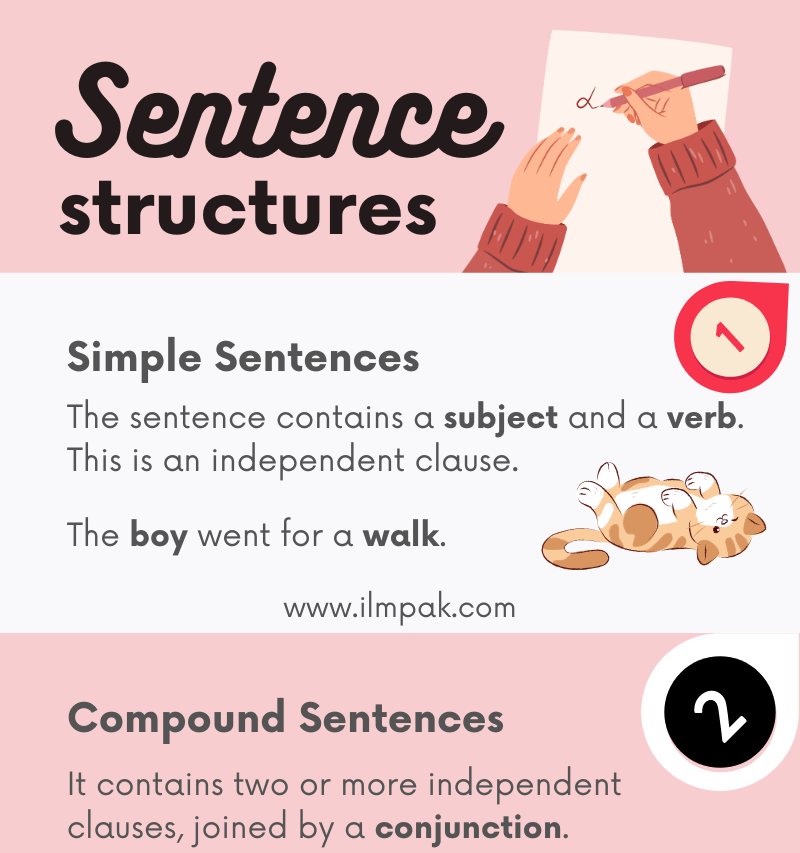Mastering sentence structures is essential for improving your English writing and speaking skills. In this guide, we’ll explore four basic sentence structures: simple, compound, complex, and compound-complex sentences. Each type of sentence adds depth and variety to your communication, making it more effective and engaging. Let’s dive into each one.
Sentence Structures in English
Understanding and using these four types of sentences will greatly improve your writing and communication. Whether you are composing an email, writing an essay, or simply having a conversation, using simple, compound, complex, and compound-complex sentences will help you express yourself clearly and effectively.
Feel free to practice these sentence types by writing examples of your own, and see how each structure can enhance your English language skills!
1. Simple Sentences
A simple sentence consists of a subject and a verb, forming a complete thought. This type of sentence contains just one independent clause, which can stand alone as a complete sentence.
Example:
- The boy went for a walk.
In this example, “the boy” is the subject, “went” is the verb, and “for a walk” completes the thought.
2. Compound Sentences
A compound sentence includes two or more independent clauses, joined by a conjunction such as and, but, or or. These clauses are equal in importance and can stand alone as complete sentences.
Example:
- The boy went for a walk, and he saw his friend.
Here, “The boy went for a walk” and “he saw his friend” are two independent clauses joined by the conjunction “and.”
3. Complex Sentences
A complex sentence contains one independent clause and one or more dependent clauses. A dependent clause cannot stand alone and relies on the independent clause to make sense. Dependent clauses often begin with subordinating conjunctions such as because, since, when, or although.
Example:
- The boy went for a walk because he wanted to get some fresh air.
In this sentence, “The boy went for a walk” is the independent clause, while “because he wanted to get some fresh air” is the dependent clause that adds additional information.
4. Compound-Complex Sentences
A compound-complex sentence is the most sophisticated of the sentence structures. It combines elements of both compound and complex sentences. It contains two or more independent clauses and one or more dependent clauses.
Example:
- The boy went for a walk because he wanted to get some fresh air and get his steps up.
In this sentence, we have two independent clauses (“The boy went for a walk” and “get his steps up”) and one dependent clause (“because he wanted to get some fresh air”).


I’m serious looking for wife serious woman im 49 years old